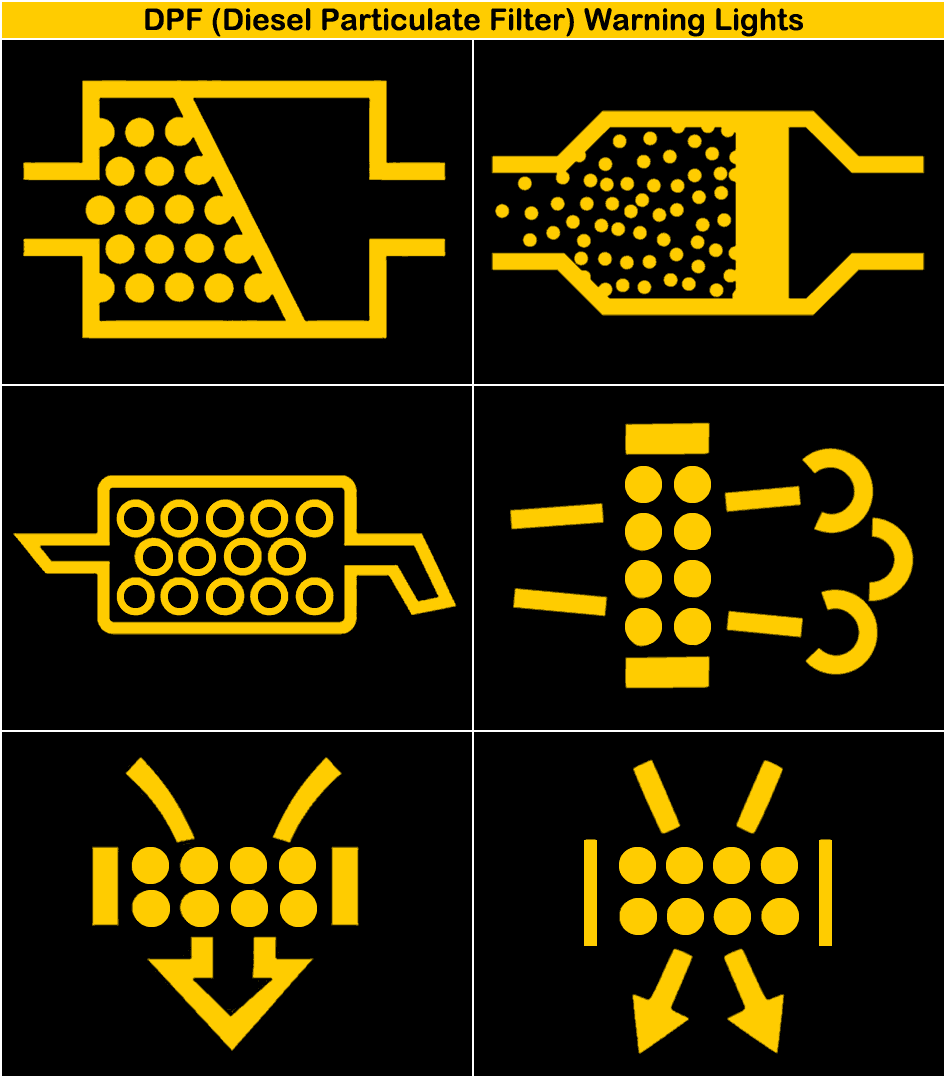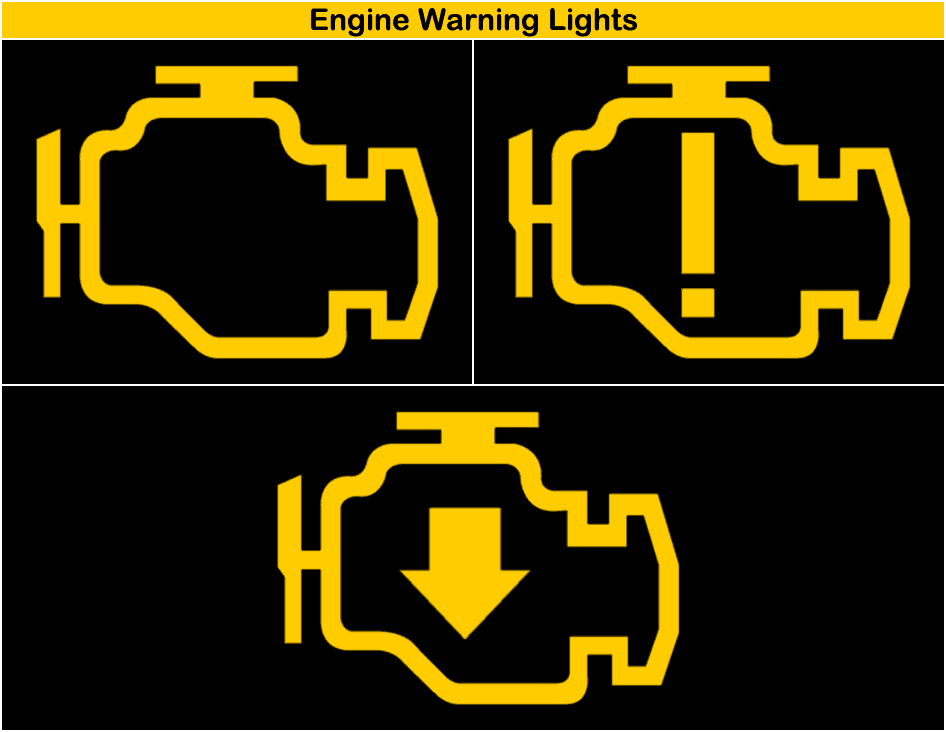DPF Warning Light Meaning
‘DPF’ stands for Diesel Particulate Filter and when the light comes on it means that the filter is full of diesel particles (soot) and needs to be cleaned. The cleaning process is called ‘regeneration’ and is usually done by the vehicle automatically (passive regeneration) without the driver being aware. Passive generation occurs at highway speeds, simply due to the DPF getting hot enough to burn off the trapped particles in the filter.
If passive regeneration isn’t cleaning the DPF, the system will attempt active regeneration. Sensors in the DPF determine that the filter is becoming full and requires active regeneration. Active regeneration involves the fuel injectors delivering additional fuel (after combustion), ultimately making its way into the DPF which makes it extremely hot. This extreme heat burns off the particles and cleans the filter.
But if the DPF warning light illuminates, it means the vehicle cannot regenerate the filter automatically, either passively or actively and requires manual regeneration. It means that either driving conditions are not right, or that the filter is too blocked and an active regeneration is not working.
What Does a DPF Warning Light Look Like?
A DPF warning light can vary between car manufacturer’s. You vehicle’s DPF warning light should look like one of the following:

How to Clean the DPF by Driving
Cleaning the DPF is a simple process and requires taking to the highway, driving at highway speeds of between 50 and 70 mph for around 10 to 15 minutes. These type of driving conditions should trigger active regeneration. Each vehicle has it’s own specifics for completing active DPF regeneration, so it’s advised to read your owner’s manual. For instance, some vehicle’s may take a little longer to clean the DPF. Once active regeneration has completed successfully, the DPF warning light will switch off.
What Causes a DPF Light to Come On?
A DPF warning light usually comes on due to driving habits. Diesel engines aren’t ideally suited to constant short trips where the engine doesn’t get hot enough to carry out passive regeneration. If you drive a diesel and predominantly take short journeys, you’re far more likely to have DPF issues. Poor engine maintenance and using the wrong engine oil types can also be the cause of DPF issues.
Can I Ignore the DPF Warning Light?
Avoid ignoring the DPF warning light as continued driving will result in damage to the diesel particulate filter. A new DPF ranges in price from £500-£2,500 and add to that, there’ll be labour costs of having a new filter fitted.
If the DPF warning light illuminates, first attempt the active regeneration method by taking to the highway. If the DPF warning light still remains lit, it may be blocked and requires forced regeneration. This requires taking your car to a vehicle workshop, but there are are also mobile DPF technicians who can come to you if you’d prefer. The cost of a forced DPF regeneration is around £100.
Continued driving with the DPF warning light on may result in other symptoms appearing such as increased exhaust emissions, a reduction in engine performance and on some vehicles, the engine may not start after a time. Along with the DPF warning light, you may also see the engine warning light come on:

Why do Cars have a DPF?
Diesel vehicles produce a lot of particulates that are harmful to health. Diesel particulate filters (DPF) were fitted as standard to most diesel cars since 2009 to trap up to 80 percent of harmful particles.
Why Does a DPF Need Cleaning?
As the DPF continually traps diesel particulate matter, it becomes full. Sensors inside the filter demine when the filter requires cleaning. A DPF can be cleaned passively, meaning if the car’s engine becomes hot enough, the particles, or ‘soot’ inside the DPF is burnt off and the emptied harmlessly.
Active regeneration means the vehicle intentionally increases the heat inside the DPF to burn off excess soot. If a DPF wasn’t cleaned, it will become blocked, lead to increased emissions and potentially damage the vehicle.
How Often Does the DPF Need Cleaning?
This depends on your vehicle and how you drive it. On average, active regeneration occurs around every 300 miles.
Can I Remove the DPF?
Since 2009, it’s illegal to remove the DPF if your vehicle came fitted with one as standard. Car owners may face a fine of up to £1000 and up to £2500 for vans. Additionally, removing the vehicle’s DPF will invalidate your insurance policy due to the vehicle being illegal for road use.
Removing the DPF will also cause you problems when having an MOT test. During an MOT, a visual inspection of the DPF takes place. If the DPF has been removed or tampered with, the vehicle will fail the MOT test.